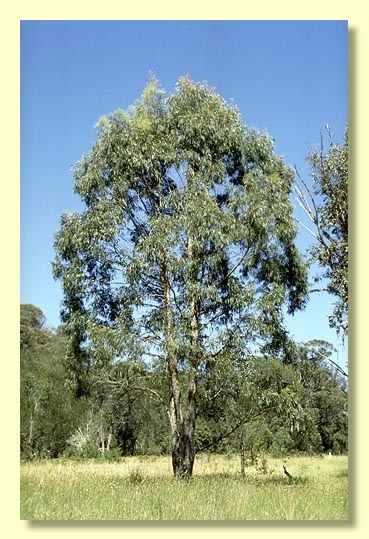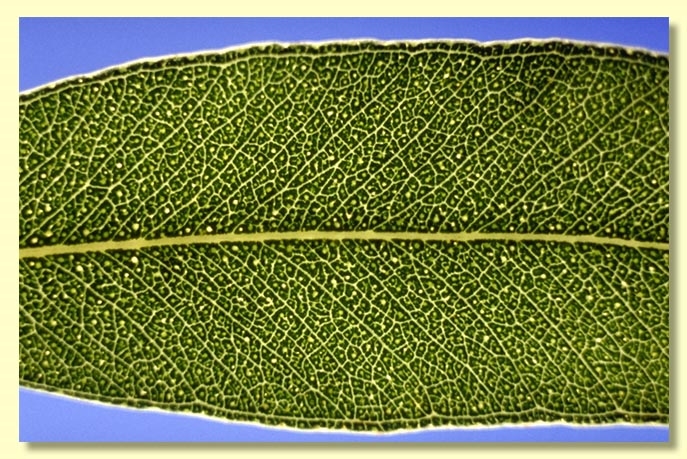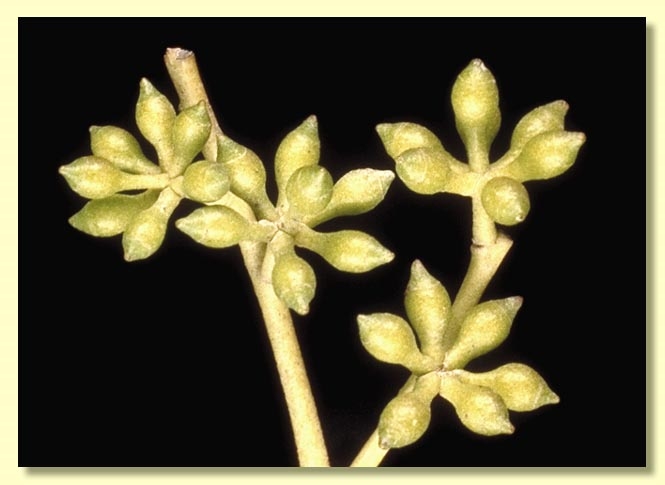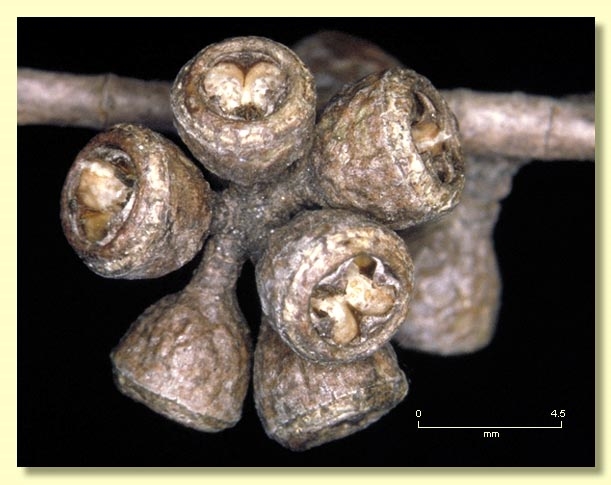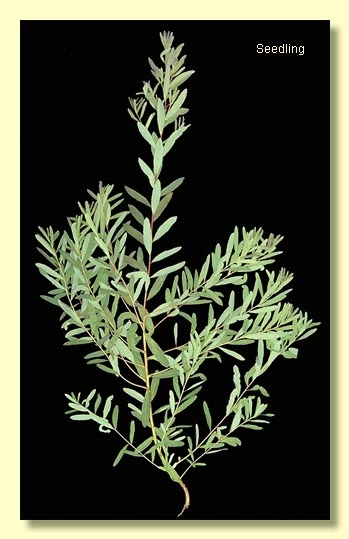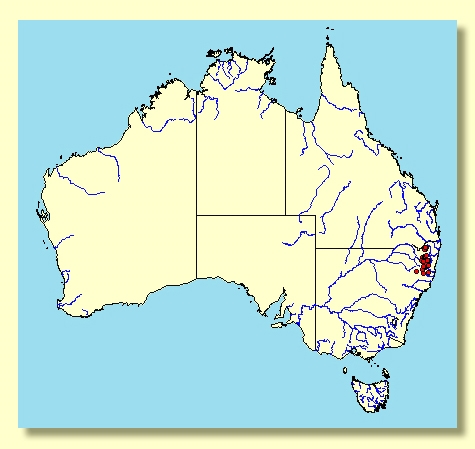Euclid - Online edition
Eucalyptus acaciiformis
Eucalyptus | Symphyomyrtus | Maidenaria | Triangulares | Acaciiformes
Bark rough to small branches, stringy or fibrous, grey to grey-brown.
Juvenile growth (coppice or field seedlings to 50 cm): stem rounded in cross-section, warty or smooth; juvenile leaves opposite at first but soon alternate, sessile, elliptical, 2–4.5 cm long, 0.5–1.5 cm wide, margin entire or crenulate, blue-green or grey-green.
Adult leaves alternate, petiole 0.5–1.7 cm long; blade lanceolate to falcate, 5–13 cm long, 1–2.2 cm wide, base tapering to petiole, margin entire, concolorous, usually dull, green or grey-green, side-veins greater than 45° to midrib, moderately to densely reticulate, intramarginal vein parallel to and just within margin, oil glands island and intersectional.
Inflorescence axillary unbranched, peduncles 0.2–0.6 cm long, buds usually 7 per umbel (rarely up to 11), pedicels 0.1–0.3 cm long. Mature buds ovoid to fusiform, 0.3–0.4 cm long, 0.2–0.3 cm wide, green, scar present, operculum conical to beaked, stamens inflexed or irregularly flexed, anthers cuboid to oblong, versatile, dorsifixed, dehiscing by longitudinal slits (non-confluent), style long, locules 3 or 4, the placentae each with 4 vertical ovule rows. Flowers white.
Fruit on pedicels to 0.3 cm long, rarely sessile, cup-shaped, hemispherical or campanulate, 0.3–0.4 cm long, 0.3–0.6 cm wide, disc raised, valves 3 or 4, near rim level.
Seeds brown, 1.2–2 mm long, ovoid or flattened-ovoid, often lacunose, dorsal surface pitted, hilum ventral.
Cultivated seedlings (measured at ca node 10): cotyledons bilobed to oblong; stems rounded in cross-section, warty; leaves sessile, opposite for ca 5 nodes then sub-opposite to alternate, elliptical, 2.5–3.5 cm long, 0.7–1.4 cm wide, base tapering, margin entire or subcrenulate, green to grey-green.
Flowering has been recorded in January and December.
A rough-barked tree restricted to the Northern Tablelands of New South Wales from near Nowendoc and Walcha north almost to the Queensland border, on ridges and slopes with shallow poor soil. The crown is dull, green to grey-green, buds and fruit small, and juvenile leaves are very narrow elliptical.
E. acaciiformis belongs Eucalyptus subgenus Symphyomyrtus section Maidenaria, a large group of species more or less restricted to south-eastern Australia, characterised by bilobed cotyledons, simple axillary inflorescences, buds with two opercula, stamens with versatile anthers and flattened seeds with a ventral hilum. Within this section E. acaciiformis and 5 other species form series Acaciiformes diagnosed by the rough bark, juvenile leaves that are soon alternate, glandular adult leaves, non-swampy habitat, and small, rather flat-topped fruit. Three of these species — E. ignorabilis, E. fulgens and E. aromaphloia — are restricted to southern Victoria and far south-eastern New South Wales, whilst E. corticosa is a rare species from east of Rylstone in central New South Wales. The remaining two species, E. acaciiformis and E. nicholii, both occur further to the north on the Northern Tablelands. E. acaciiformis differs from the better known E. nicholii by the broader adult leaves, oblong less clustered juvenile leaves, and less conspicuous valves to the fruit.

